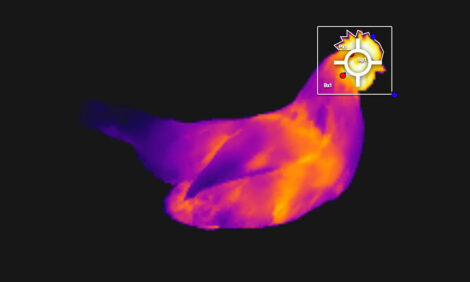



Role of Animal Agriculture in Beating Antimicrobial Resistance
A recent conference in Thailand examined the development of antimicrobial resistance, the roles played by human and veterinary medicine and how animal agriculture can contribute to the solution, including a success story from Europe. Senior editor, Jackie Linden, reports.The Swann Report published by the UK government in 1969 was among the first warnings of the emergence of antimicrobial resistance in bacteria. It recommended banning the use of human therapeutic antibiotics as growth promoters for animals and this led to the start of restrictions in the 1990s, according to Professor Trevor Bagust, President of the World Veterinary Poultry Association.
In his introduction as moderator of the closing conference on antimicrobial resistance at the VIV Animal Health Summit in Bangkok, Thailand in March, he added: "Antimicrobial resistance is a problem that will not go away. Our aim must be to reduce the rate of its spread."
Nature Strikes Back: a Global Problem

Professor Wim de Wit said that Alexander Fleming, who discovered penicillin in 1928, expressed concern that bacteria could develop resistance to antibiotics soon after his discovery.
Past director of the department of risk assessment for the Dutch Food Authority at the Ministry of Agriculture, Professor de Wit continued that in the 1980s, it was recognised that the situation was reaching crisis point.
Until around 1940, human mortality in the Netherlands declined - as the result of better hygiene, food and housing as well as the introduction of antibiotics.
Using the example of enterohaemmorhagic E. coli (EHEC), he explained that the large number of consumers that could be affected and the high risk of mortality are factors that concern retailers and a wide range of foods can carry contamination, including raw or undercooked meats and unpasteurised dairy products.
Other emerging risks come from animals, he said, citing the example of farm workers and pigs, which carry the same strains of Clostridium difficile. No differences have been found between organic and conventional production and resistance has been found in the environment.
Intensive animal husbandry is thought to be a major contributor to antimicrobial resistance, according to Professor de Wit, who mentioned limiting the stocking density of farm animals as one of his recommendations, citing evidence that Campylobacter cases declined after farms were depopulated following avian flu in the Netherlands.
International action and communication are required, and different antibiotics should be used in agriculture and medicine. The Federation of Veterinarians of Europe is recommending prescribing vets supervision, and there should be no incentives for farmers to use antibiotics but rather to focus on thorough cleaning and disinfection. Animal stocking density and growth rates should be reduced, he suggested.
As for retailers, he stressed the importance of transparency in the supply chain and full traceability, as well as communication of risks to consumers. They should consider the future for certain high-risk products.
Looking ahead, Professor de Wit mentioned the potential for new antibiotics (under an EU programme called COMBACTE), bacteriophages and competitive exclusion products.
Antimicrobial Resistance and Superbugs at the Human-Animal Interface

Dr Jim Campbell, microbiologist at Oxford University Clinical Research Unit (OUCRU), outlined his studies in Viet Nam, where very high levels of resistance have been found in Campylobacter coli in poultry and pigs as well as in C. jejuni, with patterns very similar in children and pigs/poultry in Ho Chi Minh City. He said that this resistance seemed to be transferred in both directions.
As environmental markers, rats too showed high resistance, which was thought to have originated in ducks that are kept on contaminated rivers and rice-fields.
"Resistance goes beyond boundaries of hospitals and farms," he said.
These drugs have been abused and over-used and among Dr Campbell's recommended interventions is the rationalisation of antibiotic use in hospitals, using combination treatments where they have been shown to work, as well as better control over the use of antibiotics in the community. Greater use of diagnostics would discourage automatic blanket treatments.
On farms, he stressed the need to change farm practices. As an example, he said that cleaning and disinfection is sometimes carried out on pens before they are empty, resulting in animals getting a sub-optimal dose of disinfectant, which is thought to be related to chloramphenicol resistance.
Perspective on Antibiotics from the Animal Health Industry

In 50 years, the human population will need 100 per cent more food, 70 per cent of which must come from efficiency-enhancing technology, said Thomas Shryock of Elanco Animal Health. He represented the International Federation for Animal Health (IFAH) on behalf of the Asian Animal Health Association (AAHA).
His summary of actions and recommendation needed at the national and international levels included:
- Responsible Use guidelines: appropriate veterinary antibiotic practices described; education, disease prevention, stakeholder responsibilities
- Antimicrobial resistance monitoring: need for standardised methodology so comparisons can be made over time and between locations and laboratories
- Antimicrobial sales/use monitoring
- Regulatory controls - decisions based on risk assessment and approval with appropriate label indications and use, under prescription
- Research into new products and new methods.
Mr Shryock distinguished therapeutic from non-therapeutic use. Therapeutic use may be to an individual or group that are either clinically ill or at risk of being infected; this may cover prevention in animals that are at high risk of becoming ill due to pathogen exposure. Non-therapeutic use - with the aim of growth-promotion of healthy animals - may be differentiated from therapeutic use by regulatory authorities regarding the type of product allowed.
Finally Mr Shryock presented a consensus on clinical practice guidelines for veterinarians, which included an emphasis on prevention strategies, such as vaccination and high levels of biosecurity, nutrition, housing and animal management. Therapeutic use should be minimised by treating only at-risk and ill animals, and using licensed products under label directions as far as possible. Narrow-spectrum antibiotics reduce the risk of resistance selection and amplification.
He emphasised the importance of the relationship between veterinarian, client and patient as well as record-keeping and the periodic review of usage practices in tackling the issue of antimicrobial resistance.
Success with Dutch Approach to Antibiotic Use Reduction

In December 2008, an official voluntary agreement was set up to tackle antibiotic resistance in the Netherlands involving four animal sectors (poultry, pigs, cattle and veal calves) and four stakeholder groups (farmers, livestock industry, vets and the feed industry), facilitated by the Ministry of Economic Affairs.
As Erik de Jonge, Policy and PA advisor at Product Board Feed for Poultry and Eggs in the Netherlands, explained in his presentation, the aims were to use antibiotics less, better and more transparently.
Compared to the base level of use in 2009, overall targets were to reduce antibiotic used by 20 per cent, 50 per cent and 70 per cent in 2011, 2013 and 2015, respectively.
So what was the Dutch approach?
Each sector formed a six-step Action Plan:
- registration of all delivered antibiotics on a central database
- contract drawn up between farmer and vet, as a one-to-one relationship
- development of health and treatment plans - covering animal husbandry as well as treatment of disease (based on diagnostic and sensitivity testing), both reviewed annually
- establish guidelines for the prescription of antibiotics, including first, second- and third-choices of medicine, based on efficacy, the risk of resistance and minimum use of antibiotics used in human medicine
- individual feedback with a benchmark to farmers (every three months) and vets to raise awareness of antibiotic use and to amend the farm's health and treatment plans, and
- approach to reduction of antibiotics on each individual farm
For the farm approach to reducing antibiotics, the scheme for poultry was started in January 2013. Each farm is classified by a category: 'target category' is for those already achieving the target reduction, i.e. 50 per cent of the 2009 national average; 'signal category' where the focus is to improve within four weeks; 'action category 1' will require additional screening of the farm; and 'action category 2' involves the farmer seeking independent expert advice to cut antibiotic use on his farm. In each case, the farmer decides which of these measures to take.
And has the system worked? Mr de Jonge explained that participation rates are very high, covering 90 to 95 per cent of farmers in the each sector. Furthermore, veterinary antibiotic sales have reduced by 52 per cent between 1999 and 2012.
In his conclusions, he said that antibiotic use in Dutch animal production overall was down by 32 per cent in 2011 and by 51 per cent in 2012 (the first six months) so the original targets have been achieved. In the broiler sector, the reductions were 26 per cent and 40 per cent in 2011 and 2012, respectively, and so the Dutch broiler industry is well on its way to achieving the targets.
Mr de Jonge added: "We can't stop now! We have to go on to achieve the 70 per cent reduction target by 2015."
May 2013








